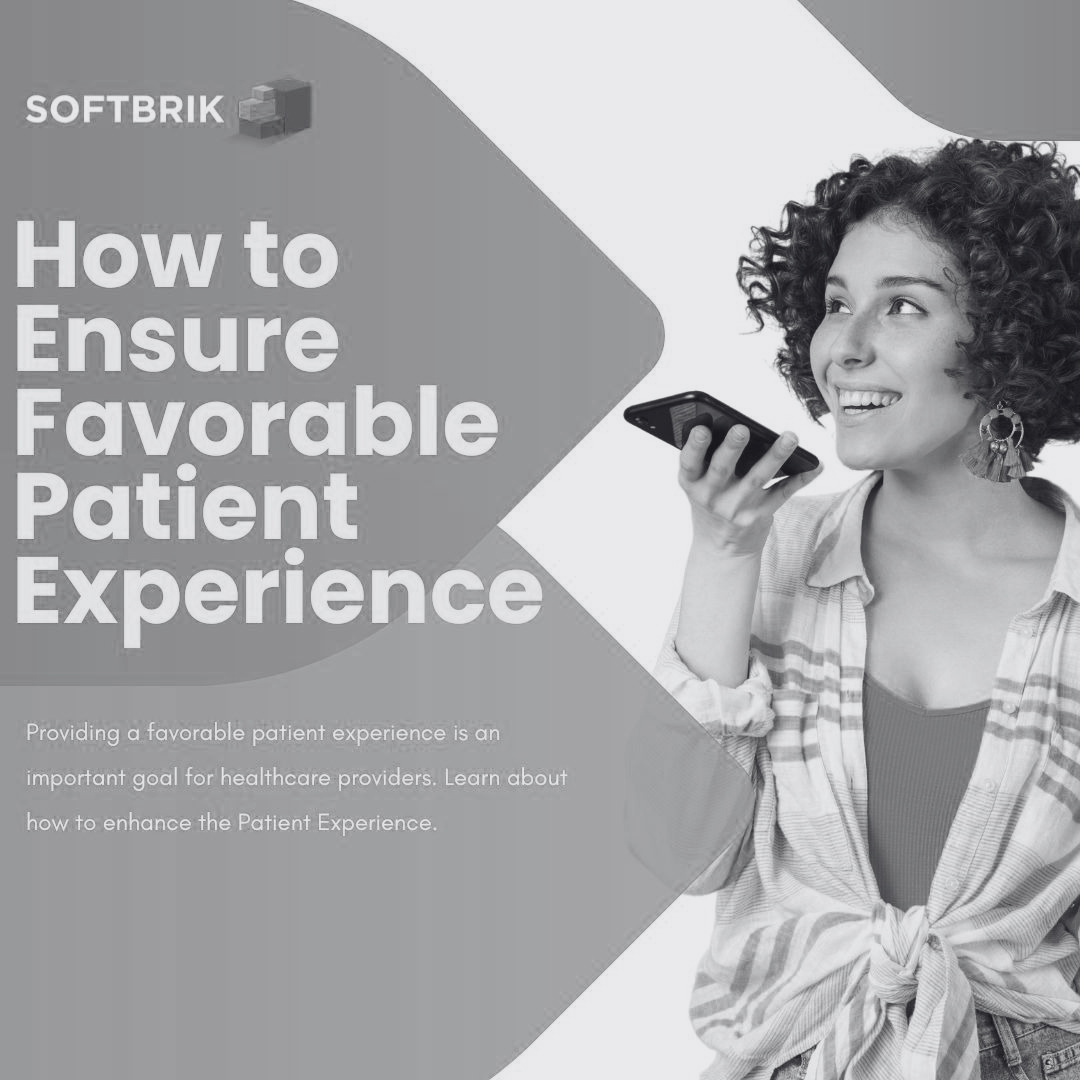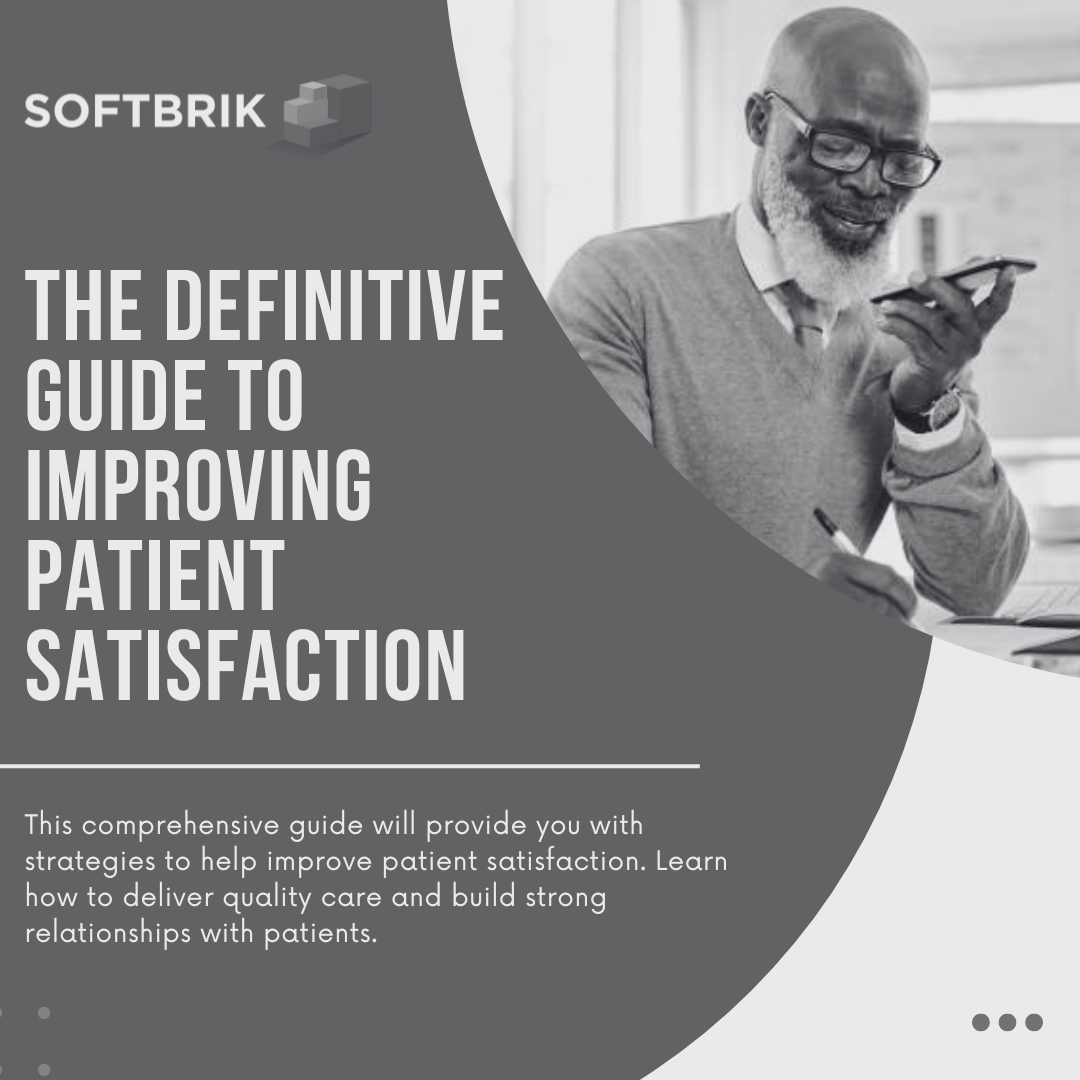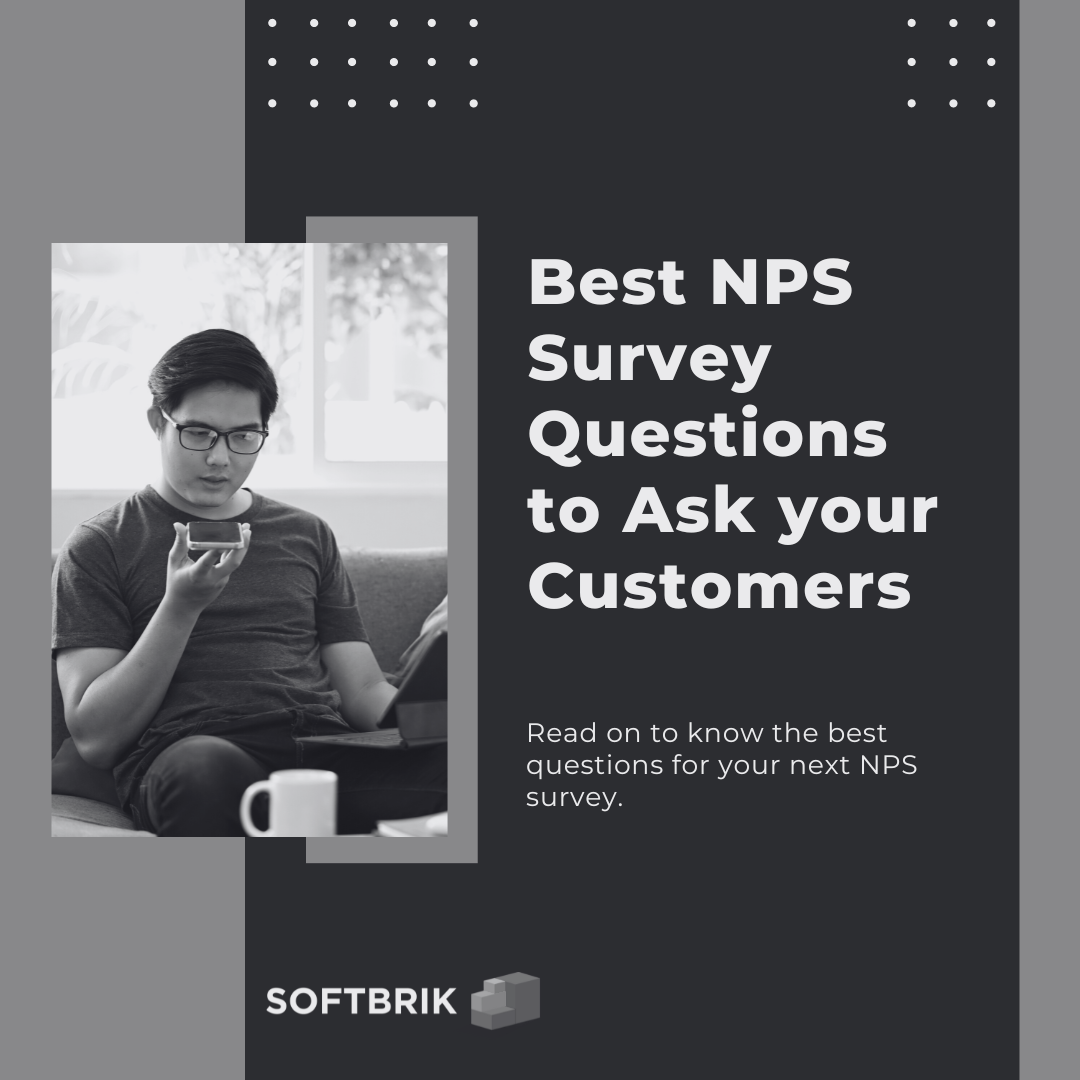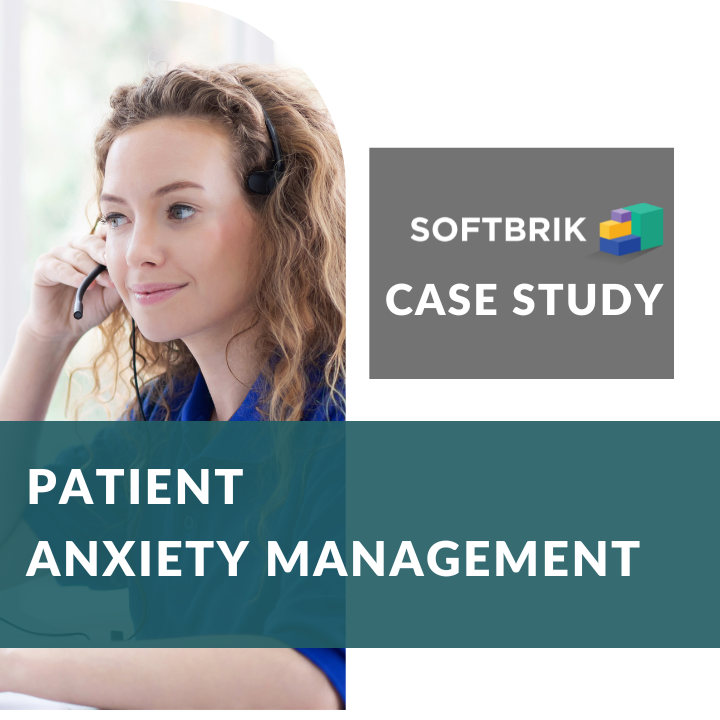Simple article to teach you about PROMs & PREMs used to assess the effectiveness of your medical treatments.
Continue readingHow to Use Patient Surveys to Improve your Healthcare Service

What are Patient Surveys
Patient surveys are questionnaires or assessments used to gather patient feedback and opinions about their experiences with healthcare providers and facilities. Usually, they are administered after a patient has received medical treatment or care. They can cover topics such as the quality of care received, the effectiveness of communication with medical staff, and overall satisfaction with the healthcare experience. The results can be used to improve the quality of care provided and to identify areas where changes or improvements are needed.
How to Design an Effective Patient Survey
A few essential steps must be followed to design an effective survey. You should clearly define what you hope to learn from the survey and what information you want to collect. It will help guide the development of the survey questions and ensure that the survey is focused and relevant. It would help if you also considered factors such as the target population, the length of the survey, and the resources available for administration and data collection.
You should also choose a combination of closed- and open-ended questions and test the survey with a small sample of patients to ensure the questions are clear and easy to understand. You should also summarize and present the results of the survey in a clear and meaningful way. You should use the data to identify improvement areas and determine the overall patient satisfaction with the healthcare experience.
Decide on How you Plan to Use the Results
Once you have evaluated the results of your patient satisfaction survey, it is time to implement changes based on the feedback received. It is essential to meet with your staff to discuss the results and consider possible changes based on patient feedback. If the feedback relates to the behavior of specific staff members, it is important to deliver it privately and sensitively. After making changes, it may be helpful to conduct another survey after a few months to see if improvements have been made.
Keep It Short And Simple
The survey should be kept short and simple due to the following reasons:
- Attention span: A long and complicated survey may require more work for patients to focus on and complete accurately. By keeping the survey short and simple, you can ensure that patients are more likely to pay attention and provide accurate responses.
- Understanding: A short and simple survey is easier for patients to understand. It can help improve the quality of the responses, as patients are more likely to provide meaningful feedback if they fully understand the questions.
- Response rate: A shorter and simpler survey may also have a higher response rate, as patients may be more willing to take the time to complete it.
Set Response Rate Goals
The response rate is the percentage of patients who complete the survey out of the total number of patients who received it. Setting response rate goals in patient surveys is important because it helps establish a benchmark for measuring the survey’s success. Moreover, a high response rate indicates that the survey was well-designed and easy for patients to complete. It can be important for surveys intended to be used for research or quality improvement purposes, as a low response rate may affect the validity of the results.
Leverage Technology to get the Most Number of Inputs
Technology can improve patient surveys by making it easier for patients to provide feedback. It can be executed through online survey tools, which allow patients to complete surveys on their own devices at their convenience. Additionally, technology can be used to analyze and interpret the data collected from patient surveys, which can help healthcare providers identify trends and areas for improvement. Moreover, technology can be used to communicate the results to relevant stakeholders, which can help facilitate the necessary changes to improve the patient experience.
Softbrik is a voice-based AI/ML platform that helps to measure and improve the patient experience. It provides you with the tools to create a more personalized patient journey by understanding the key factors that matter to the patients. Conducting patient surveys through Softbrik can help your organization to get the correct information to deliver high–quality care.
Why are Patient Surveys Important
Patient surveys provide healthcare providers and facilities with valuable feedback on the quality of care provided, which can be used to identify areas for improvement and make changes that will lead to better patient outcomes.
Such surveys allow healthcare providers and staff to listen to patients and understand their perspectives, leading to better communication, collaboration, and trust between patients and the healthcare systems. The ability to measure and track patient satisfaction over time can help healthcare providers and facilities make data-driven decisions to improve the quality of care continuously.
Frequently Asked Questions
How do patient surveys help healthcare?
Patient surveys can help by improving the quality of care, identifying areas for improvement, measuring patient satisfaction, gathering patient feedback, and improving patient retention.
How can patient satisfaction surveys be utilized for service improvement?
Patient satisfaction surveys can be utilized for service improvement by analyzing results, responding to feedback, sharing results with staff, setting goals and benchmarks, and communicating with patients.
Multilingual Survey: Benefits & How to Create One

What is Multilingual Survey
People who speak various languages are a global minority. Many people want to know if they can get the same quality of service in their native language, but they don’t know how to ask.
A multilingual survey lets you ask questions in multiple languages while still collecting and analyzing data throughout your organization. The survey uses cookies to track the respondent’s language and sends them the questions in that language. If you want to switch languages, click “change language” on your survey dashboard and select another language from the list of available languages.
Benefits of Utilizing a Multilingual Survey
Multilingual surveys are beneficial for several reasons. First, they allow you to reach a wider audience, as your survey will be accessible to people who speak different languages. It is especially important if you’re looking to expand your business into international markets or have customers who speak different languages.
Second, a multilingual survey can help reduce the time it takes to survey by eliminating the need for translation—you won’t have to pay translators or take time out of your schedule to translate the questions on your survey.
Third, surveys with multiple languages tend to have higher response rates than those in only one language because they’re more accessible to more people.
Improved Response Rates
A multilingual survey can improve your response rate by allowing more people to participate in your study. When you’re looking to survey a large group—say, 100 people—it’s essential that everyone has an equal chance of being selected. If you only have one language in which your survey is available, then people who don’t understand that language will be excluded from participating.
Increased Accessibility
Multilingual surveys also make your survey more accessible to people who speak a language other than English. It can be beneficial if you target a specific audience, such as immigrants, refugees, or people with limited English proficiency. You can include people from all over the world by offering the survey in multiple languages.
Enhanced Customer Satisfaction
If you’re trying to improve your company’s customer satisfaction, multilingual surveys are a great way. They can help you better understand your customers’ needs by allowing them to respond in their native language. It can help minimize confusion and make it easier for them to express their opinions about your business.
How to Create a Multilingual Survey
There are many ways to curate a multilingual survey. If you’re creating your survey, here is some advice on how to go about doing it:
Identify Target Audience
The first step in creating a multilingual survey is identifying your target audience. It can be done through market research or by asking your customers what languages they speak. Once you’ve identified the languages, you’ll know which ones to include in your survey.
Choose the Right Platform
The next step is to choose a survey platform that allows you to create multilingual surveys. Certain companies, for example, have over 50 languages available in their interface. The survey platform should also allow you to segment respondents by language. It will help you better analyze the results of your survey later on.
Select a Language
Next, you’ll need to select the language for your survey. You can create a survey with multiple-choice answers and select each option in the language you want. For example, if you’re targeting English speakers but want to include Spanish as an option, simply create a survey with three options: yes, no, and don’t know. Once that’s done, go back into the platform and change them all to “sí.” It will allow you to see which option is selected the most.
If you’re targeting a specific demographic, this will help you determine whether or not the language you’ve chosen is appropriate for your target audience.
Craft the Questions
Once the survey is set up, it’s time to craft your questions. It would help if you clearly understand what you want to learn from the survey and how you plan to use the information once it’s collected. It will aid you in creating questions that give accurate results and are easy for respondents to answer.
Test Your Survey
Once your survey is set up, and the questions are written, it’s time to test. You should send at least ten surveys to people who fit into your target audience and ask them to complete them. Once they’ve done so, compare their answers with what you had in mind when creating each question.
If there are any discrepancies or some questions seem confusing or ambiguous, reword them until they’re clear and easy for respondents to answer.
Multilingual Voice Surveys tool Softbrik
Softbrik is a multilingual voice survey tool that allows users to conduct surveys in multiple languages. It can be beneficial for businesses or organizations that need to reach a diverse customer base or research various languages.
One of the key features of Softbrik is its ability to automatically detect the language spoken by the respondent and route the call to the appropriate language survey. It ensures that the respondent can take the survey in their preferred language, increasing the accuracy and validity of the results.
In addition to supporting multiple languages, Softbrik also offers a variety of other features for conducting voice surveys. These include skipping or branch based on responses, recording and transcribing responses, and customizing the survey to meet specific needs.
Softbrik for businesses and organizations looking to conduct multilingual voice surveys quickly and efficiently. The tool keeps in mind GDPR and other compliance laws to ensure utmost data privacy. It can help to gather important data and insights from a diverse customer base, ultimately improving the effectiveness of research efforts.Try our free signup today.
Frequently Asked Questions
Why is multilingual support important?
Multilingual support is important in healthcare to ensure that patients who speak languages other than English can communicate effectively with healthcare providers, build trust, prevent misunderstandings and misdiagnosis, and create a more inclusive and welcoming environment.
What is multilingual service?
Multilingual service is the provision of services in multiple languages to ensure effective communication with patients who speak languages other than English and to provide high-quality care that meets their needs.
How to Ensure a Favorable Patient Experience

What is Patient Experience
Patient experience is the patient’s perception of their experience with a healthcare provider, clinic, or hospital. It includes the physical environment, staff attitude, and communication. The patient’s overall satisfaction with their visit often results from how well these factors align with their expectations for care and service.
Patient experience is a critical factor in the success of the healthcare industry. Therefore, you must ensure that patients have a good experience while being treated. It will help improve their health outcomes and sharpen your reputation as an organization that cares about people.
The Importance of Providing a Positive Patient Experience
You must consider the patient’s experience with your team and the office as a practice. Patients will be more likely to recommend your practice and return for follow-up visits if they feel their needs are satisfied.
Patients are also less likely to sue or claim on their insurance if they have a positive experience with your team. They will also be less likely to make a claim on their insurance because of an accident in the waiting room or during an appointment.
Lastly, patients who receive good care are less likely to be readmitted to the hospital because their original condition worsens because of poor treatment by another provider or hospital staff member.
How to Improve Patient Experience
Patient experience is a critical aspect of healthcare because it is directly related to patient satisfaction, which in turn is associated with better clinical outcomes. Patient experience has multiple dimensions, including:
Change the way you think about Patients
In the hospital, patients are not customers. They are people who have a right to expect your care and respect. They can be difficult to deal with at times, but you need to treat them with respect and empathy because that’s how you’ll get their cooperation in achieving the best possible outcome.
Patients are not numbers or problems to be solved by any means necessary; they’re human beings who deserve compassion and understanding from those caring for them.
Personalize your Approach
Before starting any treatment, getting to know a person as much as possible is important. You can ask them about their background, family, culture, and likes or dislikes and tailor your approach accordingly.
Hospitals often use a patient’s name tag for identification purposes. However, it’s still important to call patients by their first name when talking with them or to write notes on medical charts so that they feel more at ease during visits (and not like they arere just a number).
If you have time before seeing a new patient, research what health issues they might face based on age/gender/ethnicity/location, etc. It gives an idea of where they may be coming from regarding their expectations of receiving care in general – and specifically from you!
Collect Patient Feedback
To collect patient feedback, you should start by using a feedback form. This should be placed at the end of the appointment or before they leave your clinic. You can also ask your patients for feedback verbally. If done right, this can be an effective way to get their opinions on what they liked and did not like about the service they received and suggestions for improvement.
There are many different types of surveys that you can use to solicit patient feedback, including:
- NPS (Net Promoter Score)
- Satisfaction Surveys – where patients rate their experience from 0-10 or 1-5
- Customer Journey Maps – show how customers move through each step within a process or journey across touchpoints along with key moments that define whether someone leaves or stays loyal (e.g., satisfaction)
Identify Opportunities for Improvement from Feedback
Listen to feedback and identify opportunities for improvement. Patient experience feedback is an important source of information on improving the quality of service provided. You must listen carefully to what your patients say and make improvements where possible.
It’s also important to share these improvements with patients on time. Hence, they know that their concerns have been heard and addressed – this will help build trust between doctor and patient, which is one of the most important factors in ensuring a favorable patient experience.
You need to decide what improvements need to be made based on patient feedback and then implement them accordingly. It makes the patients feel that you actually care for your patients.
Make Sure their Data is Safeguarded
Patient privacy and security are important to your patients. The last thing you want is for their data to be compromised, so make sure it’s encrypted and backed up properly.
Encrypting any information that might be vulnerable can help protect your patients from hackers, who could use this information in attacks against other organizations. Furthermore, storing data in one place and then moving it elsewhere for backup or storage purposes will ensure that it remains safe throughout its lifetime – even if you accidentally lose access to the source files.
Finally, integrating any new technology with existing systems is always preferable because it helps reduce the chances of mistakes occurring during implementation.
Softbrik for Improving Patient Experience
Softbrik is a voice-based AI/ML platform that helps you measure and improve the patient experience. It enables you to collect patient feedback, analyze it, personalize your approach, and identify opportunities for improvement.Softbrik gives you the tools to create a more personalized patient journey by helping you understand what matters most to your patients and how they want to be treated. It ensures that your organization delivers high–quality care while creating an exceptional experience every time.
Frequently Asked Questions
What do you do to ensure a patient has an exceptional care experience?
To ensure a patient has an exceptional care experience, healthcare providers can communicate effectively, create a comfortable and welcoming environment, foster a positive patient-provider relationship, and respond to patients’ needs and concerns.
What are the 4 P's in patient experience?
The 4 P’s in patient experience are physical (related to the physical environment), psychological (related to the emotional and mental well-being of patients), process (related to the healthcare process), and practitioner (related to the healthcare providers).
The Definitive Guide to Improving Patient Satisfaction in Healthcare
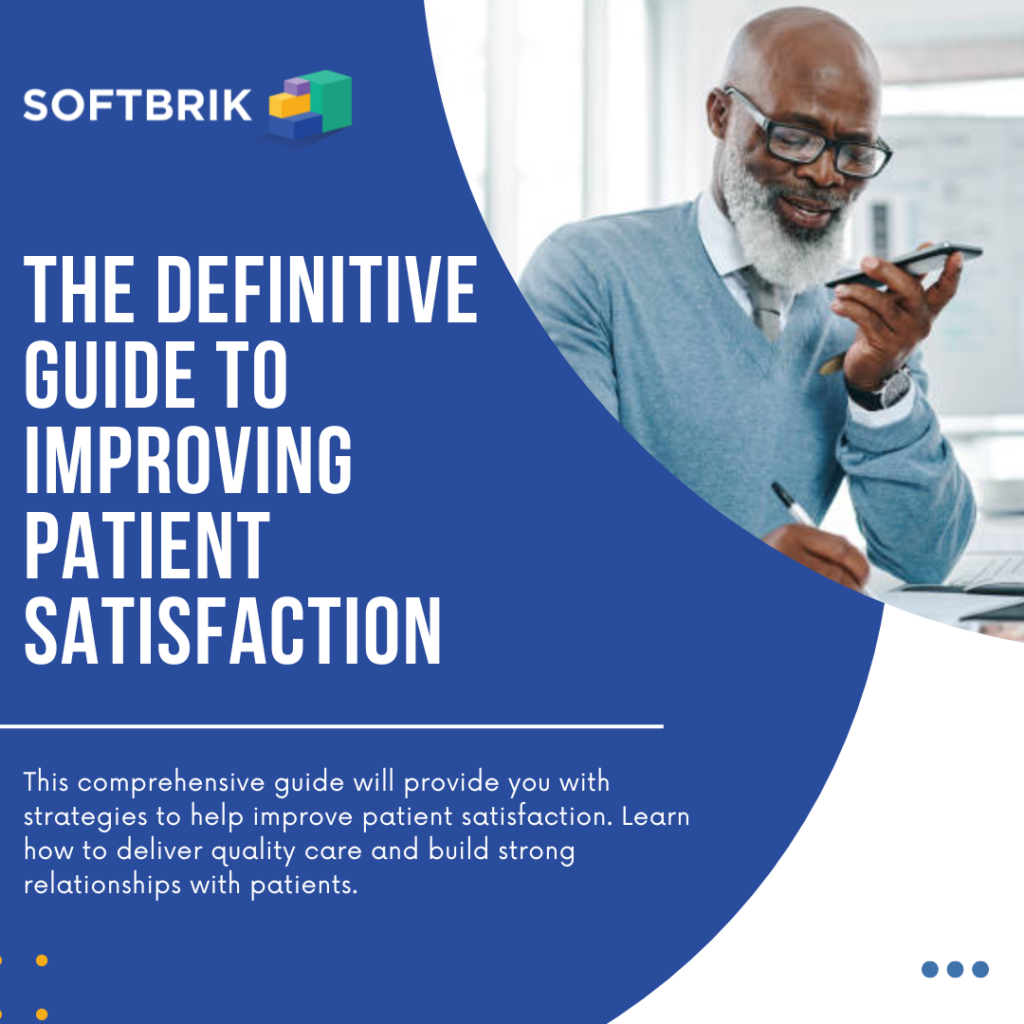
What is Patient Satisfaction
Patient satisfaction is a metric that asks patients to rate the degree to which they are satisfied with the quality of care provided by a facility. It is not a measurement of health outcomes but an indicator of how well the patient’s experience aligns with expectations.
Patient satisfaction data can be used to compare hospitals and provider groups based on their performance relative to their peers on this measure. Patient satisfaction measures are also used to evaluate the quality of care and identify improvement areas.
Why Patient Satisfaction in Healthcare is Important
When it comes to healthcare, patient satisfaction indicates the quality of healthcare provided. Patients satisfied with their experience are more likely to feel comfortable enough to return for treatment, recommend the practice to others, and even pay more for treatment.
Patients must also be satisfied with their doctor’s services to feel confident in their car. If they don’t feel confident in their care, they might not follow through with the recommended treatment plan.
Ways to Improve Patient Satisfaction
There are several ways to improve patient satisfaction, including:
Gather Patient Feedback
Patients are a great source of feedback on your practice, and you should make it easy for them to share their thoughts. One way to do this is by curating a patient satisfaction survey that asks patients how they feel about the care they receive and why. You can even ask patients to fill out comment cards at the end of each visit or send them an email survey once or twice yearly.
Understand your Patients and Tailor the Experience
It’s important to know your patients, which means more than just knowing their names. You should understand what they value most in their healthcare experience and how they feel about the type of care you provide. It will enable you to tailor your services to meet their needs.
Act on Insights at Every Level
Once you’ve collected and analyzed patient feedback, you must act on the insights you uncover. Use them to improve your customer experience and increase customer satisfaction. You can share your findings with staff members who interact with patients daily or use the data to identify weak spots in your business model and make changes accordingly.
Tips for Sustaining Patient Satisfaction
Patient satisfaction is an important metric for healthcare providers to track, as it can impact patient retention, reputation, and even revenue. Here are a few tips for sustaining high levels of patient satisfaction:
- Foster open communication: Encourage patients to ask questions and voice their concerns. Ensure they understand their treatment plan and what to expect during their visit.
- Show empathy: A little bit of compassion can go a long way in making patients feel heard and understood.
- Provide timely care: Long wait times and delays in treatment can lead to frustration and decreased satisfaction. Make sure to schedule appointments efficiently and address any issues that may cause delays in care.
- Follow up with patients: Make sure to check in with patients after their visit to see how they are feeling and address any additional concerns they may have.
- Solicit feedback: Regularly ask for patient feedback and use it to improve your care.
- Respect patient preferences: Some patients may have specific preferences or needs, such as a preferred method of communication or accommodation for a disability. Make sure to respect these preferences and accommodate them as much as possible.
By following these tips, healthcare providers can work to sustain high levels of patient satisfaction and improve the overall patient experience. Patient satisfaction surveys are a great way to measure your progress. Contact us today if you’re interested in learning more about patient satisfaction surveys.
Frequently Asked Questions
What drives patient satisfaction in healthcare?
Factors that can drive patient satisfaction in healthcare include quality of care, effective communication, comfort, convenience, positive treatment outcomes, and respect.
What is the essential element of patient satisfaction?
Essential elements of patient satisfaction include quality of care, effective communication, comfort, respect, and empathy.
A 5-Step Guide on Conducting Market Research Surveys

What is a Market Research Survey
Have you ever launched a new product only to find out that your target audience doesn’t want it? Or tried to advertise a product, only to find out that the ad campaign you chose doesn’t resonate with the audience at all?
That’s where market research surveys come in.
These surveys help you figure out what people think about your product or service by collecting information about your target audience and their habits, needs, and preferences. It’s essential to understand what your customers want so that you can provide them with a product or service that meets their needs.
A survey can be administered in person, by phone, or online. They usually ask a series of questions designed to uncover the opinions and behaviors of the participants. Market research surveys are commonly used by businesses that want to understand their customers’ wants and needs better.
How to Conduct a Survey for Market Research in 5 Steps
Decide your Goal
The first step in conducting a survey for market research is to decide your goal. Why are you running this survey? If you’re driving a market research survey, then your goal is likely to collect information about your audience so that you can make informed decisions about how to market products and services.
That means finding out how your customers perceive your product or service, or you might want to learn about their needs, or you want to know what they think of your brand.
Once you have decided what kind of information you need, choose a survey that will help you get those answers.
Choose a Type of Survey
The first step in conducting a market research survey is choosing the type of survey you want. There are two types of market research surveys:
Primary Market Research is when you collect data from a sample that has never been collected before, such as an interview or a questionnaire.
Secondary Market Research is when you collect data from a sample that has already been collected. This could mean basing your sample on existing data.
Research and Design the Questionnaire
Now that you know which type of survey you want to go for, it’s time to do the research and design the questionnaire. Here are a few things to consider while creating your questionnaire:
- When conducting a survey for market research, it is essential to design the questionnaire in such a way that it is easy to comprehend and answer. This can be accomplished by using clear, concise language and designing questions that clearly state what they are asking.
- It should also align with your brand identity so that respondents will feel comfortable sharing their opinions with you (and hopefully come back for more!).
- Try to include demographic information about respondents so that you can compare responses across different groups (age, gender, etc.). This will help you get the most information out of each respondent.
- It would help if you also considered whether or not you want to include open-ended questions in the survey. These types of questions allow for more detailed responses from participants. They can provide more information than closed-ended questions– But there’s a downside to this too. Open-ended questions may also take longer to answer (it’s usually best to stick to a quick and concise 5-minute questionnaire!)
Pro Tip: Include images, emojis, or other multimedia elements to make things more visually appealing.
Execution of Survey Programm
Once you’ve created your questionnaire, it’s time to execute it! There are many ways market research surveys can be executed, whether it is via emails or posted on social media. Before distributing your survey, you’ll need to decide which method works best for your situation.
To understand what method best suits your survey, you will need to evaluate where you might find your potential respondents lingering the most.
Use Software to Analyse Data
To ensure you’re getting accurate and adequate data from your market research survey, you can use software to evaluate your questionnaire results. This will help you understand what questions were answered correctly, which questions were skipped over, and how many people actually took the time to fill out all of your questions.
You can use a survey tool to conduct market research and then analyze the results.
If you’re looking for a more hands-off approach, plenty of online tools can help with survey design and data analysis. You just have to make sure that they meet your needs in terms of features and cost.
Conduct Your Market Research Survey with Softbrik
There are endless ways to conduct your market research survey, but we’ve made it easy for you by providing the best tips and tricks for getting the answers you need in the fastest and most efficient way. Now that you are equipped with these tips, it’s time to put your epic questionnaire into action!
Not sure how?
Well, Softbrik can help you find out if your idea has legs by surveying people in your target market. It offers a variety of survey solutions, depending on the industry you are in– From industries ranging from Telecom to Health, e-Commerce, and more, Softbrik has you covered.
Softbrik’s market research platform is the perfect tool for conducting surveys, as it comes with a plethora of features that make data collection and analysis easy. The platform’s machine learning-based functions automatically detect key insights and emotions in the feedback. This makes it possible to collect qualitative data through surveys and turn it into actionable insights.
Frequently Asked Questions
How can you create a market research survey?
There are a few important elements to keep in mind when creating a market research survey. You need to set your goal, identify your target audience, and design your questionnaire to yield the data you need to answer your question.
What are the components of a market research survey?
A standard market research survey consists of three components: the introduction, the questions, and the conclusion.
The introduction is where you get to tell the survey-taker why they should take your survey.
The questions are where you get to ask the questions that will help you with your market research.
The conclusion is where you can wrap up your survey and thank the people who participated.
An Introduction to Contact Center Trends in 2023

What is a Contact Center
A contact center is a division of a business that handles customer queries. Most often, it is the central point from where a business manages all its customer interactions. The primary objective is to connect with the target audience and provide them with technical support. The contact center agents communicate with customers through multiple channels such as email, chat, social media, etc.
Top 4 Contact Center Trends in 2023
Over the years, contact centers have grown significantly. Customers now expect businesses to be available and easily approachable round the clock. The customer contact landscape has thus shifted to new trends. Businesses are trying to meet the evolving needs of their customers to build strong customer relationships.
Digital transformation has been the most rewarding trend in 2023 for businesses. Besides this, the application of sophisticated analytics, cloud communication, and improved self-service options to increase the productivity of agents are the trends that are shaping the business environment in 2023.
Omnichannel Support
With changing times and rapid digitisation of industries, customer expectations have undergone a significant shift. Omnichannel support is the new standard now. Under this customer experience strategy, consistent customer interaction is done via more than one channel involving emails, chatbot, voice-over IP, website support among others.Just having several channels is not sufficient. How a business can seamlessly interact from one channel to another is the key to an efficient omnichannel.
Multichannel customer support and omnichannel support are quite different. An omnichannel experience allows the conversation history and the context itself to navigate from one channel to another while multi-channel support just offers support across different platforms. This means more personalized support along with expediency of the process. One of the biggest ways to smoothen the customer experience for contact centers is to improve upon ways in which agents interact with customers across various channels.
Application of AI and Automation
Advancement in technology has a continuing effect on customer service trends. From ordering a pizza to booking a hotel room, automation is everywhere these days. With Artificial intelligence (AI) today, a complete end-to-end customer service that provides real-time self-service is possible. It has transformed and modernized the tools and processes which contact centers apply in their daily interactions.
Predictive analytics is something all brands are getting into to streamline customer contact services. It would be natural to expect more contact centers adopting automation and AI-powered technology in the future. Technology is known for saving the user’s valuable time. The same is the case with the application of AI in contact centers. Customers don’t feel that their valuable time has been wasted. Not only does it let agents work efficiently, but it also creates a loyalty-building customer experience through its seamless cross-channel transitions.
Recognizing the Importance of Customer Support
Selling a product is only half the battle won for any business. In order to be successful in the long term, it is crucial to provide flawless customer support. The rewards of providing stellar customer support are manifold -positive brand image, brand value, recurring revenue, and so on. Believe it or not, good customer service can even justify an otherwise-sounding expensive price tag on your product!
Contact Centers as Revenue Drivers
Earlier contact centers were perceived as unavoidable “cost centers” but companies are recognising how good quality customer support can impact a business positively. . But according to the recent emerging trends, these centers are considered “revenue drivers.”
Speaking to a contact center agent facilitates the purchase decisions of customers. Moreover, they can offer additional services or introduce the customers to related products. This influences the perception and purchase of the customers and improves overall customer retention. It’s a business rule that retaining the current customers is more important than acquiring a new one. Thus, it enables recurring revenue for the business and saves on heavy advertising expenses.
The Importance of Keeping Up with the Contact Center Trends
Having a robust customer support system opens up proactive engagement opportunities. A dynamic contact center is capable of maintaining customer loyalty that lasts. These trends in contact centers have helped in attracting more trade and providing higher customer satisfaction. These trends are certainly here to pay dividends to companies for years to come.
The trends are also of substance because they fundamentally shift the way businesses and customers perceive customer interactions. In this era of complexity everywhere, making smart choices is the key.
Frequently Asked Questions
What does contact center mean?
The term “Contact center” reflects the many ways besides telephone calls of communicating with customers. It depicts a shift from the traditional ways of customer service. The whole process of tracking, coordinating, and managing is made faster and smoother.
What is the difference between a call center and a contact center?
It is a common notion that contact centers and call centers are interchangeable terms. That is not true. They are different in the methodology they adopt and are used for different business objectives. A call center heavily relies on customer interactions via the phone while a contact center provides customer services through a range of mediums like chat, social media etc.
Why do we need a contact center?
In this era of millennials and Gen Z, where calling is seen as time-consuming and mostly avoided, a call center may not work as a one-size-fits-all solution. Given that, you may need a customer service system that uses multiple communication channels. These channels suit different buyers, facilitating a wider customer interaction.
Best Market Research Survey Questions to Ask your Customers

Types of Market Research Survey Questions
A market research survey can help businesses to get a foothold in the market. A key factor in making such surveys successful depends on asking the right questions. It is fundamental to ask relevant questions in a market survey if you genuinely want to use them as research intelligence tools.
There are various types of market research questions, and you can use them according to the survey objective, sample size, survey method, etc. Read on to see some of the most popular market research survey question types.
Close Ended Questions
A close-ended question is a question with pre-defined structured responses. The respondents have to choose answers from a distinct set of responses. These are usually “yes and no,” “wrong and right,” or “true and false.” These questions aim to collect focused quantitative data or one-word answers. They limit the respondents to the answer options already provided. Belonging to this family are the following questions types:
Dichotomous Questions
As the name suggests, these questions offer only two possible answers. Such questions are usually used in surveys that need a Yes/No, Agree/Disagree, Like/Dislike, and Fair/Unfair response. It helps in understanding the contrast among respondents. There is a clear distinction between opinions and preferences. Here are a few examples:
- Do you like this product? Yes/No
- Are the prices under our brand fair? Fair/Unfair
- Do you like our product return services? Like/Dislike
· Do you agree with our updated privacy policy? Agree/Disagree
Multiple Choice Questions
Multiple choice questions (MCQs) give more than two answer options to the respondents. The users are asked to choose one of the choices given in each question. This helps in getting a clearer answer. The purpose is to fetch the exact preferences and requirements of the consumers. Here are a few examples:
- Which type of shampoo do you use the most?
Herbal/Anti-dandruff/Oil-based/Anti-hairfall
- What do you prefer for breakfast?
Home-made food/Corn flakes/Brown Bread/Juices
- Where do you shop more frequently?
Local market/ Office canteens/ Malls/ Online platforms
Rating Scale
It’s a famous variant of multiple-choice questions and is used to collect relative information about a particular subject. It’s used when a survey intends to assess the feedback for a product or service in comparative form. The respondents are encouraged to rate the product or service concerned or the attributes associated with them. A rating scale provides more information than dichotomous questions. Researchers use it when they intend to link a qualitative measure with a product or a feature thereof. Examples:
- Which of these best describes your experience with your latest purchase of our products?
Very unpleasant/Somewhat unpleasant/Neutral/Somewhat pleasant/Pleasant
- How likely are you to recommend our services to others?
Very likely/Likely/Never/Unlikely/Very Unlikely
Importance Scale
In survey questionnaires, “level of importance” questions help the researchers in assessing what is most important to their audience. These are detailed questions. Proper measurement of importance garners critical information about potential and existing customers. Such questions are highly fruitful in the pre-launching phase of a product/service. A few examples could be:
- How important is the ‘speed of service’ in our restaurant to you?
- How important is eco-friendly product packaging in your purchase decision?
- What level of importance do you assign to the response time of our customer support team in addressing complaints?
Not at all important/Slightly important/Important/Fairly important/Very important
Open-Ended Questions
Open-ended questions are free-form questions used to elicit a detailed answer from the respondents. These are more suitable for exploratory market research surveys. Respondents are encouraged to submit more of their own opinions and experiences in an open-text format. This needs more time and effort on both ends.
Entirely Unstructured
These are typically used in qualitative research surveys. Unstructured questions are used predominantly in face-to-face interviews, where it is easy to make a free-flowing conversation with the respondent. They can also be used in telephonic interviews. However, it is indeed a time-consuming process. Given structured limits are absent, a conversation can stretch for a longer time. Nonetheless, experienced interviewers with strong research backgrounds can make the best out of these. Examples of unstructured conversation could be:
- Do you exercise? Yes.
- How often do you exercise? Twice daily except on Sundays.
- What equipment do you use? Dumbbells, Treadmill, Exercise Cycle, Sitting mat.
· How does exercising make you feel? I feel fresh and energetic.
Sentence Completion
This is a psychological method to gain an understanding of consumer behavior, preference, and feelings regarding the subject. The initial part of sentences is prepared in advance, and respondents are asked to add the remaining part based on their liking and understanding. This is also a useful technique for getting a grip on the mindsets of potential customers of a company. Below are a few examples:
- After a long and tiring work day, I prefer to…….
- My priority while shopping for my infant is……..
- · ………………..are the best features to look for in body wash.
Word Association
This is yet another psychological test conducted in market surveys to test respondents’ perceptions. They are given words or a short phrase and are requested to respond with the first word that comes to their minds upon hearing/seeing them. These words or phrases are called ‘stimulus words.’ Spontaneity is a must while answering these surveys. Usually, these tests are used to name a new product or service. Some researchers use these questions as a warm-up exercise before starting a detailed personal interview. Examples:
- What is it that comes to your mind when I say “Fashion”…..?
- What comes to your mind when I say “interior decoration”….?
- What comes to mind when someone says “cars”….?
Freaquently Asked Questions
What are market surveys and their types?
A market survey is a research process in which information about consumers or target markets is collected, analyzed, and examined. There are different types of market surveys, such as Competitor surveys, Buyer persona surveys, Brand awareness surveys, Market segmentation surveys, etc.
What are the 5 types of market research?
The five types of market survey research are-
- Market Segmentation
- Consumer satisfaction
- Competitor analysis
- Customer loyalty
Product development and insights
Why is survey the best method for market research?
A market survey helps you understand your consumers, the market you are entering, and your competitors. As a result, you’re in a better position to make effective business decisions. The insights you gain are useful in positioning your products and prices in the target market.
Best NPS Survey Questions to Ask your Customers in 2023
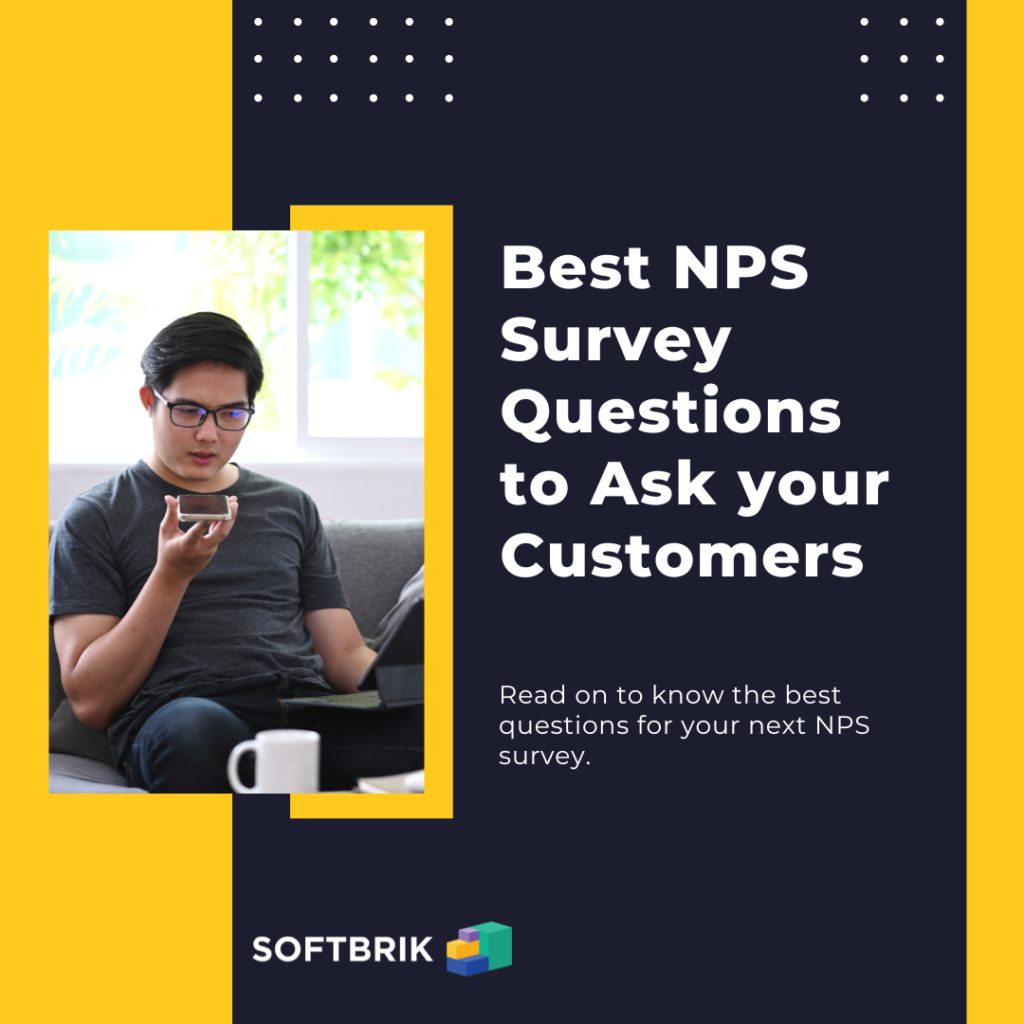
How do NPS Surveys Work?
The Net Promoter Score (NPS) was developed by Fred Reichheld in 2003 and has since become the gold standard in customer loyalty measurement across industries worldwide. NPS is based on responses to a single question such as How likely are you to recommend our company/product/service to a friend or colleague?) These are usually broken down into three categories of scores – Promoters, Passives, and Detractors, each of which is designed to evaluate different aspects of customer satisfaction and behaviour over time.
Top 5 Types of Questions to Ask your Customers
A collection of examples of NPS questions is provided below. These example questions can be used as a template to create your own NPS surveys.
Asking Customers honestly to Rate your Product or Services
You may have customers who are dissatisfied with your product or service. In this case, you can use a customer satisfaction survey to assess their experience before they leave your site. By doing so, you’re able to identify the problems that could be affecting their online shopping experience. By knowing what customers feel about your site, you can devise ways to improve your products and services so more people will continue using them. The more people who like what you’re offering, the greater the chance that those customers will provide referrals for others interested in buying from you.
For example, if 20 percent of your clients answered 9 or 10, subtract that from 80 percent—or 16 percent—which equals 64 percent, meaning that 64 percent of all your customers would promote you to others.
How to receive Authentic Feedback?
An important question in the NPS survey is “How likely is the customer to recommend your company, products, or services to a friend, colleague, or family member?” This question may be used to evaluate how pleased consumers are with your customer service team. This question is designed to help evaluate the quality of customer service at a given business and find out how satisfied customers are with their experience. It’s a great way to improve the quality of your customer service, as well as improve how consumers choose your business over competitors.
Here are a few examples:
- When you contacted our support team about an issue, did we solve it quickly?
- Was our salesperson helpful when you had questions about our products?
- Were we able to resolve any problems related to your order?
These questions will help you figure out where improvements need to be made so that customers have a great experience every time they interact with your company.
Asking Customers to Rate their Recent Interaction with your Business
NPS surveys are widely regarded as one of an organization’s most important tools in its customer feedback arsenal. Not only do they help you learn about your customers, but they also can be used to review specific encounters with a particular client, such as post-service, post-purchase, or post-onboarding. These questions provide an excellent opportunity to find any issues that may affect your current customer base.
Here are some NPS question examples
- What did we do well?
- What could we improve on?
- How likely are you to continue using our services?
- Did we solve your problem?
- Would you recommend us?
These questions will help you get genuine answers that can be further analyzed to drive improvement and growth.
Asking Customers to Rate your Business
When you are conducting an NPS survey, there are many things that you need to consider. One of them is just going with the flow and start asking questions that can provide you with a better understanding of the current situation and where your business stands among others in the market. The following questions may be used for various purposes, but generally, show how customers feel about your business and their general attitude toward it.
An Effective Question to include in your NPS Survey Questions: How happy are you with our service?
Asking Customers Follow-up Questions
After you’ve asked your NPS question, there’s value in asking follow-up questions. You can use them to get more in-depth information and insight into why a customer chose a specific rating or gave you a low score. Typically, these two type of follow-up questions can be asked:
- one that asks them to quantify their score (e.g., from 1-10, how likely are you to recommend our brand?),
- another that asks for specific feedback on what could be improved.
For example, what improvements could we make to help you give us a higher score?
This gives you data points based on how customers feel about both your brand and what they would like from it.
How to Improve your NPS Survey
Improving your connection with detractors is more than just responding to a poor experience. Businesses must provide a practical solution for consumers who provide unfavorable feedback to resolve the condition that produced it. Customers will feel supported and may modify their opinion of your service if you resolve their concerns.
The simplest strategy to encourage new business and increase your NPS is to engage promoters to work to your advantage. Promoters are already aware of your capabilities, but specific input should be obtained to see how your company differs from the competition and how you can continue to meet their expectations.
Frequently Asked Questions
What are the top three NPS questions?
Below are the three most used NPS questions:
- Which of these best describes your recent purchase experience?
- Would you recommend [product] to a friend or colleague?
- How likely is it that you would purchase again from us?
Which question is most commonly used to calculate Net Promoter Score NPS?
How likely are you to recommend our company/product/service to a friend or colleague? (On a scale of 0-10) The higher your rating, the better.
Is NPS the best way to measure customer satisfaction?
Yes. The Net Promoter Score (NPS) is one of many tools for gauging customer satisfaction.
Case Study: Reduce Patient Anxiety
Reduce customer and patient anxiety by using voice message based bulk response for communication while improving admin productivity.
Continue reading



